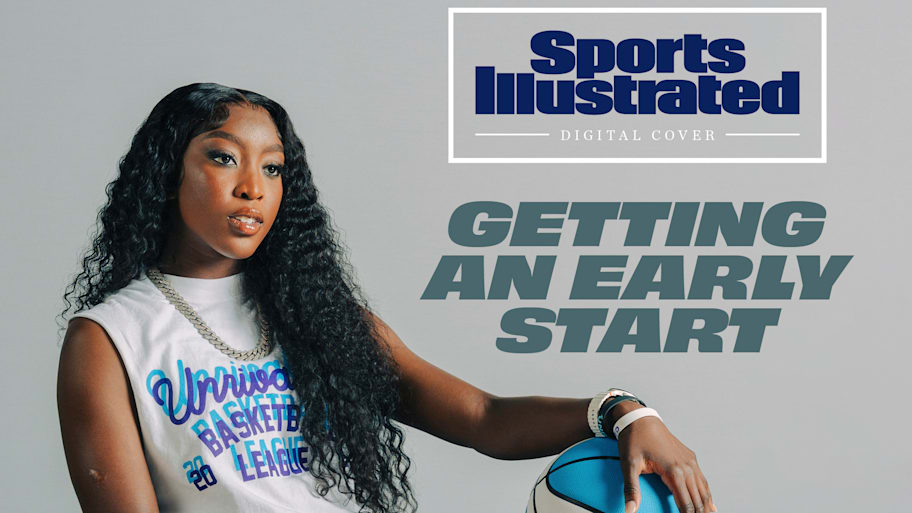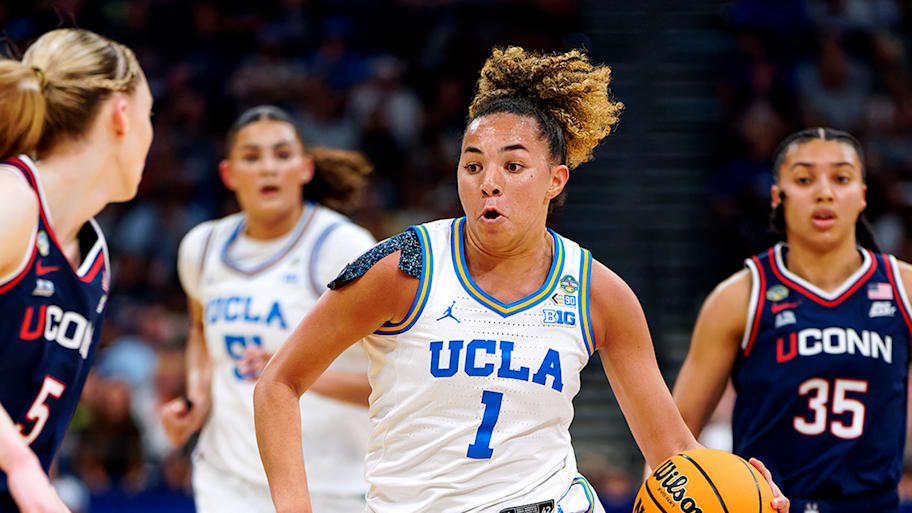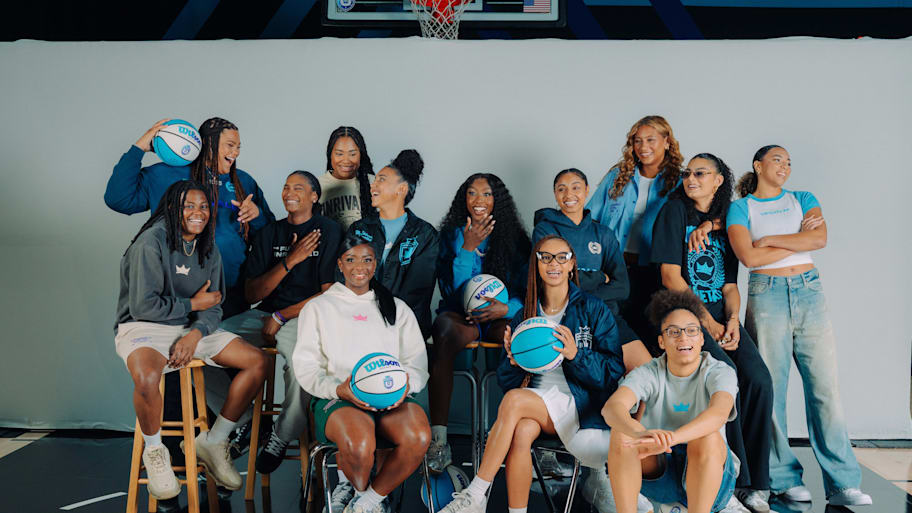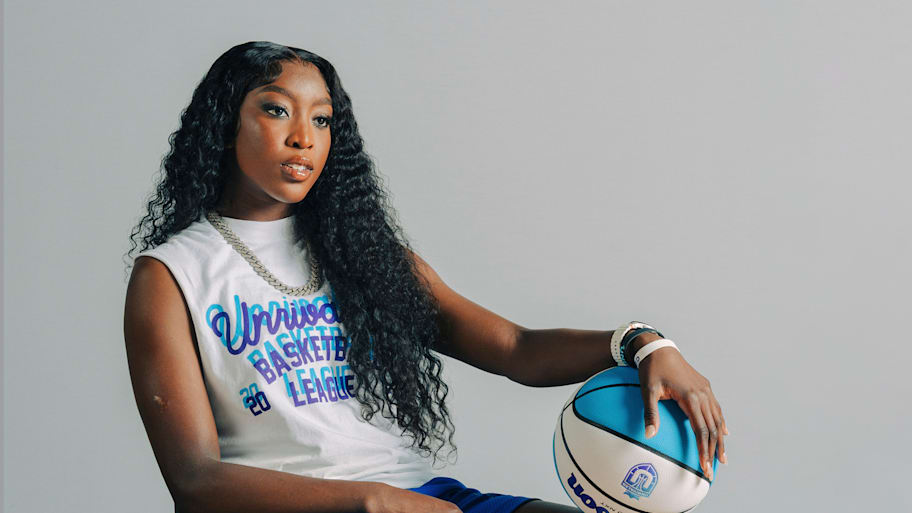Flau’jae Johnson has always loved a vision board. “I get all the cutouts that I want,” she says. “I’m like, This is what I want my life to look like.” Now in her senior season at LSU, preparing for professional hoops, Johnson has never had more choices of just what to cut and paste onto her board.
Her fellow top players may not all be planning their careers in quite the same way. But they’re all sharing in the same feeling of possibility as the college basketball season kicks off this week. They’re watching as the WNBA rides a major growth wave and negotiates a new collective bargaining agreement. They’re weighing the opportunity presented by Unrivaled, the three-on-three league founded by WNBA players Napheesa Collier and Breanna Stewart, which began play during the W offseason last January and has since announced expansion and a new round of investment to bring its valuation to $340 million. They’re looking at how best to convert their NIL deals into ongoing professional sponsorships. In short, they’re figuring out how they will navigate a world that did not exist when they entered college.

The changing futures of this group may be the best way to measure the growth of women’s basketball. Most who entered college at the dawn of NIL in 2021 or ’22 were made to believe that their spotlight and marketability would never be greater than it was under the NCAA. The professional futures that followed could be expected to involve low pay and limited choices. But that has changed enormously over the years they have spent in college.
The fact that players like Johnson have never before had these types of opportunities suggests that she has the right idea with her vision board. A five-year plan is not useful in an environment where things change so quickly. Older pros can still be helpful resources, but their own careers don’t exactly serve as useful examples. They never had these choices. And if any dream feels too lofty for the vision board now, Johnson’s generation might only have to wait a few years. “You’ve got to create your own blueprint,” says Johnson, who has been in national commercials for brands from Powerade to Samsung to Experian and is also a rapper signed to Roc Nation. “There’s no model … I feel like we’re more so the model that people will follow.”
The contours of that shifting dynamic were captured most clearly over a weekend summit held this summer. More than a dozen of the best players in women’s college basketball descended on the Unrivaled league campus in Miami. Each had signed a deal that would have been difficult to explain just a few years ago.
As the NCAA’s definition of amateurism has shifted over the last decade, there is one part of the concept that has remained untouched, not to mention relatively unquestioned: College athletes can sign lots of contracts to be paid lots of money for lots of different activities. But they still cannot sign a contract with a pro sports league involving pay (or promises of future pay) for their athletic skill. In that last clause, however, Unrivaled saw an opportunity. A pro league cannot pay college basketball players to play basketball. But it could try paying them for being themselves.
So this summer brought news that Unrivaled had signed NIL deals through the end of the 2025–26 college season with 14 of the best players in NCAA women’s basketball. There was no commitment for players to join the league. Instead, the deals centered on the weekend summit in August, where the players donned Unrivaled merch, joined skill development sessions, participated in group bonding activities and took photographs and filmed videos. It was familiar material for players used to handling sponsorship deals and brand activations. Except here the brand in question was a league in which they might eventually play.
It felt novel on several levels. Unrivaled had not existed when many of these players enrolled in college. Let alone the notion that women’s basketball might sustain another domestic league that was not just operational, but also attractive enough to investors and flush enough with cash to actively court players.
“We’re in a unique position where we can have that connective tissue with college athletes and just build the rapport early with them,” says Unrivaled general manager Clare Duwelius. “That was kind of the focus for us as we reached out to different agents and players to see if they’d be interested in passing the baton to the next generation.”
Unrivaled leadership originally decided on a list of 14 college players to which it would extend these NIL offers. The hope was to get 10 to say “yes.” All 14 did.
Many of the players described the deal as obvious for them. They know they have choices right now. And they want to keep them open. “It’s unbelievable, the amount of things that you can do now,” says UCLA All-American senior center Lauren Betts.

That’s strikingly different from the careers these players had imagined for themselves as girls. “Growing up, I always talked about wanting to play in the W,” Betts says. “And I remember my parents telling me, ‘Well, you can hope that you could play in the W forever, but you have to make a living as well, and you might have to go play overseas.’ ” That had always been the standard in women’s basketball. Players made as much as 10 or 15 times a WNBA salary playing during the winter in countries like Russia, Turkey and China. It has been just a decade since Diana Taurasi’s Russian team paid her $1.5 million to sit out the WNBA season and play exclusively overseas, a nearly impossible figure to refuse when her WNBA salary was just under what was then the league maximum of $107,000. The professional hoops aspirations of an entire generation were shaped by stories like that one.
But the best college players today find themselves with a very different outlook. The WNBA is likely to see major salary increases under a new collective bargaining agreement: One reported league proposal set the supermax at $850,000 and the veteran minimum at roughly $300,000. That would more than triple the former and quadruple the latter, with similar increases expected for rookie contracts, too. (The WNBA and WNBPA reached a 30-day extension on the current CBA shortly before it was due to expire last week. Negotiations on a new agreement are framed by the 11-year, $2.2 billion media rights deal the league signed in July 2024.) And while a new agreement may come with updates to the prioritization clause—which requires WNBA players competing in offseason leagues to report for the start of training camp or be suspended for the season—there is more choice than ever around those offseason leagues.
Unrivaled was founded partially to relieve the strain that players experienced going overseas every winter: It offers a shorter season that starts later and finishes earlier than most international leagues, giving players a longer break without the stress of overseas travel. Unrivaled debuted with an average player salary of roughly $220,000—more than double the average last year in the WNBA. (Paige Bueckers, the W’s 2025 No. 1 pick, signed an early version of an Unrivaled NIL deal giving her equity in the league while she was still in college. Upon turning pro, she signed a three-year deal to play in Unrivaled, where she will earn more in her first year than in all four seasons of her WNBA rookie contract. Johnson signed a similar equity deal last December.) And yet another domestic league with a complementary schedule now exists in Athletes Unlimited. If players long felt like they scarcely had one viable pathway to a career, they now feel like they have the freedom to pick from different options in charting their own.
“You can’t really look at people ahead of you, because it was a little different for them,” says UConn graduate student guard Azzi Fudd. “But you’re always being grateful for them and giving them their flowers and thanking them whenever you can, because without them, none of this would be possible for us.”
There is freedom in choice. Players can afford to be more selective about the opportunities they pursue and the deals they make. By the time they turn pro, they have spent years navigating brand deals, getting more comfortable asserting themselves and figuring out how to build the kinds of careers they want.
“Everything’s a learning opportunity,” Fudd says. “So if something happened in this shoot that I didn’t like—O.K., cool. Next time I know what to ask for, I know what not to ask for.”

And they do not feel quite so constrained by time pressure as some of their predecessors did. The message in women’s basketball had been: There will never be a platform for you as big as the one you will have in college. A stronger audience for pro hoops, and more lucrative opportunities to go along with them, have changed that dynamic.
“It’s not just the years in college that we have to make money,” says UCLA senior guard Kiki Rice. “It’s after that. And I think that’s what we all feel like we deserve.”
Their careers have already looked different than any that came before them. And they’re just fine with that. Says Johnson with a grin, “I always say I was born at the right time.”
More College Basketball on Sports Illustrated
This article was originally published on www.si.com as A Pro League Paying College Athletes? Unrivaled Is Thinking Outside the NIL Box.
